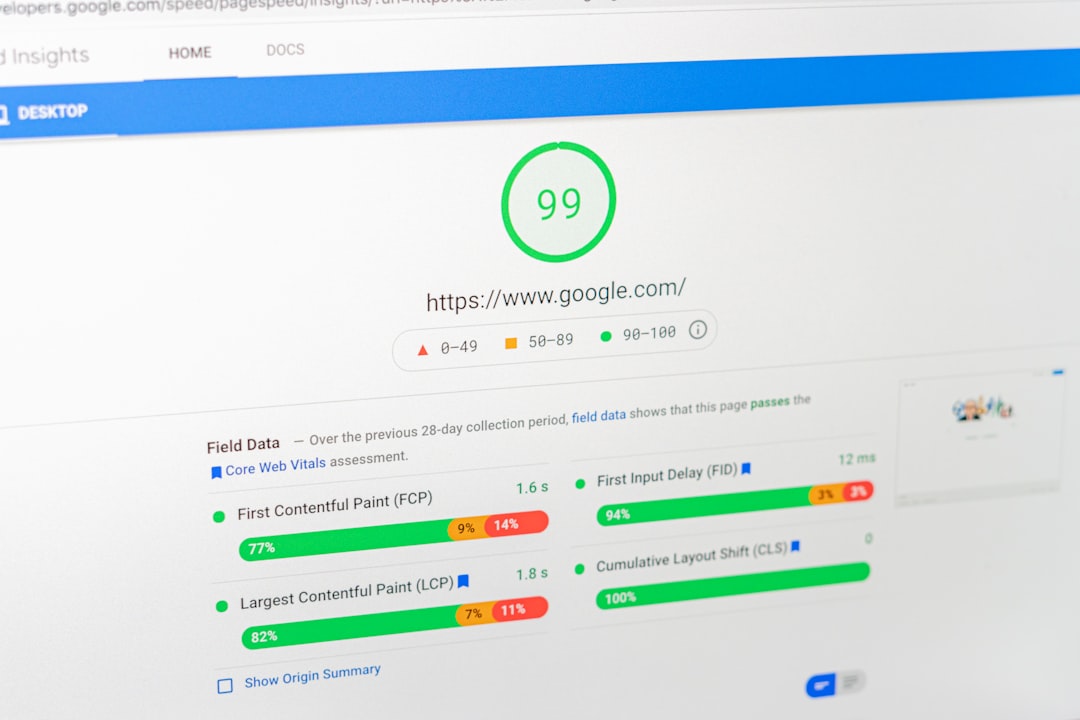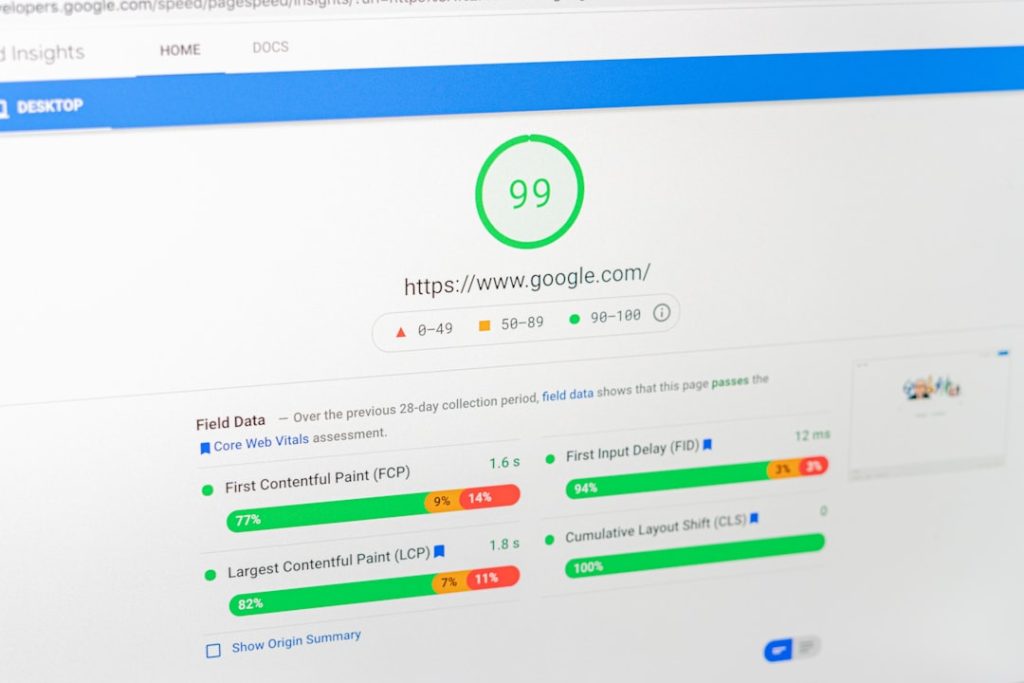In 2024, Google unveiled Core Web Vitals 2.0, an essential update to its site performance and user experience metrics. This reboot reshaped how SEO professionals, developers, and marketers approach performance enhancement and user satisfaction. By targeting more accurate benchmarks and real-world experience indicators, Core Web Vitals 2.0 signals a strategic shift toward a more user-centric web ecosystem.
It’s not merely a technical update—it’s a wake-up call for brands to prioritize site speed, layout stability, and interactivity to improve both search rankings and the overall experience of their users.
What Are Core Web Vitals?
Core Web Vitals are a set of key metrics introduced by Google to measure real-world user experience on websites. They focus on aspects of loading performance, responsiveness, and visual stability. Originally launched in 2020, these core metrics were:
- Largest Contentful Paint (LCP): Measures loading performance.
- First Input Delay (FID): Measures interactivity.
- Cumulative Layout Shift (CLS): Measures visual stability.
However, with the evolution of web platforms and user behavior, the initial set became outdated. In response, Google introduced Core Web Vitals 2.0 with refined metrics to replace or complement the older ones.
What’s New in Core Web Vitals 2.0?
Core Web Vitals 2.0 isn’t just a tune-up—it’s a structural realignment that prioritizes new performance signals while deprecating outdated ones. The most notable changes include:
- INP (Interaction to Next Paint) replaces FID: INP offers a more comprehensive view of site responsiveness by considering all user interactions, not just the first one.
- LCP enhancements: The measurement techniques for LCP have improved, offering more accurate assessments across different device types.
- Visual Stability updates for CLS: Adjustments ensure consistency across sessions and better represent sudden shifts in layout.
This evolution demonstrates Google’s aim to measure performance as users experience it—reliably and at scale.

Why Site Speed and UX Matter for SEO
Search engine optimization has historically centered on keywords, content quality, and backlinks. But with rising user expectations, Google now includes on-page experience as a core ranking factor. That means site speed and user experience (UX) directly influence your SEO performance.
Here’s how:
- Faster loading times reduce bounce rates: Research shows that if a web page takes longer than 3 seconds to load, up to 53% of users will abandon it.
- Improved interactivity increases engagement: Sites that respond swiftly to user input promote deeper interactions and longer sessions.
- Stable layouts create trust: Unstable elements that shift during load time cause frustration and can lead to accidental navigation.
All of these indirectly impact crucial SEO metrics like dwell time, conversion rate, and page views.
How to Prepare Your Website for Core Web Vitals 2.0
With the rollout already in effect, it’s essential for site owners to adapt quickly. Here’s a structured approach:
1. Audit Current Performance
Use tools such as:
These tools provide insights into how your site stacks up against Core Web Vitals thresholds and suggest actionable fixes.
2. Optimize for INP
Since FID is no longer the measure for responsiveness, focus on reducing overall interaction delay:
- Optimize JavaScript execution by reducing complexity and minimizing long tasks.
- Use
requestIdleCallback()to defer non-essential scripts. - Implement lazy loading for third-party resources such as chat widgets and analytics.
3. Reduce LCP Time
LCP measures how quickly the main content of the page is visible. To improve it:
- Prioritize loading of above-the-fold content.
- Use modern image formats like WebP or AVIF.
- Preload critical resources (fonts, hero images).
4. Improve CLS
Visual stability is a subtle but critical part of the user experience.
- Always include dimensions for images and videos in the HTML/CSS.
- Avoid content injection above existing content (e.g. ads, banners).
- Ensure fonts load quickly to prevent layout shifts due to fallback fonts.
Common Pitfalls to Avoid
While optimizing for Core Web Vitals, keep these mistakes in mind:
- Over-reliance on JavaScript-heavy frameworks: SPAs can be fast but require meticulous optimization.
- Ignoring mobile UX: Most web traffic is mobile-first, and Core Web Vitals data is collected from real-user metrics across devices.
- Fixating only on desktop performance: Use emulators or real devices to test loading behavior under limited networks.
The SEO Reboot: What This Means Long-Term
Core Web Vitals 2.0 represents the most significant shift in technical SEO since mobile-first indexing. It forces organizations to reevaluate how they define a ‘quality’ site—not just from a content perspective, but from a usability one.
Expect more visibility for sites that strike the right balance between form and function. Also anticipate that Google will continue its trend toward real-user metrics that reflect actual experiences across the web.
In essence, this update is a call to raise the bar across digital properties. For businesses, mastering Core Web Vitals 2.0 now will lead to sustainable SEO advantages, higher retention rates, and ultimately, better business outcomes.
Frequently Asked Questions
What are Core Web Vitals 2.0?
Core Web Vitals 2.0 is Google’s updated set of metrics to measure the user experience of a webpage, focusing on interaction, loading speed, and layout stability. It replaces some older metrics like FID with more comprehensive ones like INP.
How does INP differ from FID?
While FID measures only the delay in the first user interaction, INP evaluates the entire duration of all interactions during a user’s visit, offering a more accurate reflection of how responsive a website feels to users.
Are Core Web Vitals a ranking factor for Google?
Yes, Core Web Vitals are part of Google’s page experience signals, which influence search rankings—especially for mobile searches.
How can I check if my site meets Core Web Vitals standards?
You can use tools like Google Search Console, PageSpeed Insights, and Lighthouse to get a detailed report on your Core Web Vitals performance.
Does Core Web Vitals 2.0 apply to all websites?
Yes, all websites indexed by Google are assessed using these metrics, regardless of their size or type.
Do I need to optimize both desktop and mobile performance?
Absolutely. Since most traffic comes from mobile devices, Google emphasizes mobile performance in its ranking criteria.
By addressing these critical elements now, businesses can ensure their websites not only rank well in search but also deliver experiences that meet the expectations of modern users.
